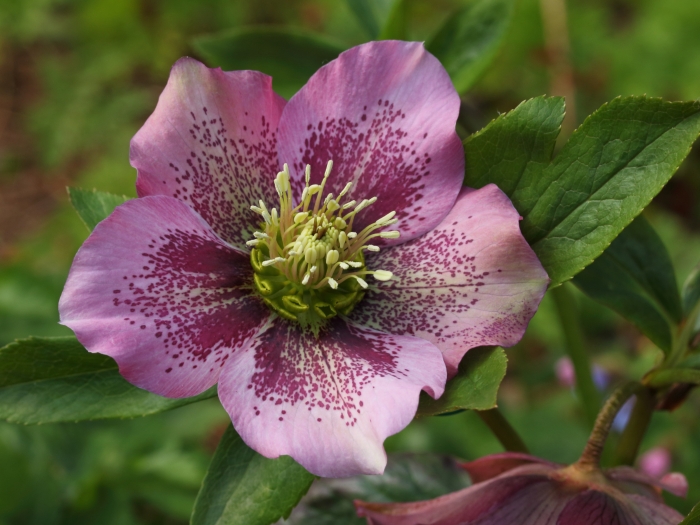Lenten Rose
(Helleborus orientalis)
Lenten Rose (Helleborus orientalis)
/
/

Dominicus Johannes Bergsma
CC BY-SA 3.0
Image By:
Dominicus Johannes Bergsma
Recorded By:
Copyright:
CC BY-SA 3.0
Copyright Notice:
Photo by: Dominicus Johannes Bergsma | License Type: CC BY-SA 3.0 | License URL: https://creativecommons.org/licenses/by-sa/3.0 | Uploader: Famberhorst | Publisher: Wikimedia Commons | Title: Lenteroos_(Helleborus_orientalis)_03.JPG | Notes: Uploaded own work with UploadWizard |






































































Estimated Native Range
Summary
Helleborus orientalis, commonly known as Lenten Rose, is an evergreen perennial herb native to the understory of deciduous woodlands in Turkey and the Caucasus region. It typically grows to a height of 28–45 cm (11–18 in) and features glossy, dark green, palmate leaves composed of 7–9 leaflets with serrated margins. The leaves are leathery in texture and maintain their evergreen status throughout the year. From late winter to spring, Lenten Rose produces cup-shaped, pendent flowers that emerge in clusters of 1–4 on thick stems above the foliage, with prominent yellow stamens. The flowers can be quite showy and come in a range of colors in cultivated varieties, including white, green, pink, maroon, purple, and spotted forms. All parts of the plant are poisonous if ingested.
Lenten Rose is valued for its early blooming period, providing color in the garden when few other plants are flowering. It is ideal for shaded or part-shaded garden spots, such as woodland gardens, shaded borders, or as ground cover under deciduous trees. The plant prefers humus-rich soil and is hardy in USDA hardiness zones 4–9, tolerating temperatures down to −15 to −20 °C (5 to −4 °F). In cultivation, it requires part shade to full shade, consistent moisture, and well-drained soil. While generally low-maintenance, it can suffer from foliar diseases such as leaf spot and crown rot in overly wet conditions.CC BY-SA 4.0
Lenten Rose is valued for its early blooming period, providing color in the garden when few other plants are flowering. It is ideal for shaded or part-shaded garden spots, such as woodland gardens, shaded borders, or as ground cover under deciduous trees. The plant prefers humus-rich soil and is hardy in USDA hardiness zones 4–9, tolerating temperatures down to −15 to −20 °C (5 to −4 °F). In cultivation, it requires part shade to full shade, consistent moisture, and well-drained soil. While generally low-maintenance, it can suffer from foliar diseases such as leaf spot and crown rot in overly wet conditions.CC BY-SA 4.0
Plant Description
- Plant Type: Herb
- Height: 1-1.5 feet
- Width: 1-1.5 feet
- Growth Rate: Moderate
- Flower Color: White, Pink, Purple
- Flowering Season: Spring, Winter
- Leaf Retention: Evergreen
Growth Requirements
- Sun: Part Shade, Full Shade
- Water: Medium
- Drainage: Medium, Fast
Common Uses
Bank Stabilization, Bee Garden, Border Plant, Deer Resistant, Drought Tolerant, Low Maintenance, Potted Plant, Rabbit Resistant, Rock Garden, Salt Tolerant, Showy Flowers, Street Planting
Natural Habitat
Understory of deciduous woodlands in Turkey and the Caucasus region
Other Names
Common Names: Orient-Nieswurz, Röd Julros, Orientalisk Julros
Scientific Names: , Helleborus orientalis, Helleborus colchicus, Helleborus heyderi, Helleborus abschasicus, Helleborus orientalis subsp. abschasicus, Helleborus orientalis var. abschasicus, Helleborus orientalis var. heyderi, Helleborus porphyromelas, Helleborus tinctus,
GBIF Accepted Name: Helleborus orientalis Lam.